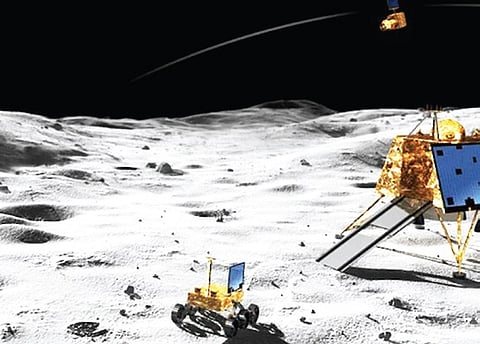

BENGALURU: The Indian Space Research Organisation (ISRO), in another study, has enhanced the possibility of water ice in the polar craters of the Moon. Data revealed that the amount of subsurface ice in the first couple of metres is about 5 to 8 times larger than the one at the surface in both poles (North and South). This crucial information will aid drilling on the Moon to sample or excavate that ice on future missions, and the long-term presence of humans. Not only this, based on the depth of the water ice, it can help select future landing and sampling sites for Moon missions.
The study, on the ‘Reachability and Genesis of Water Ice on the Moon’ is being carried out by scientists of the Space Applications Centre (SAC) from ISRO, in collaboration with researchers at IIT Kanpur, University of Southern California, Jet Propulsion Laboratory, and IIT (ISM) Dhanbad. It was published in the journal International Society for Photogrammetry and Remote Sensing.
The study also revealed that the extent of water ice in the northern polar region is twice that in the southern polar region. Confirming the hypothesis made during the Chandrayaan mission in 2008, the primary source of subsurface water ice was suspected to be in the lunar poles. This result was found by utilizing polarimetric radar data from the Chandrayaan-2 Dual-frequency Synthetic Aperture Radar instrument.
Another interesting point made by the study is that water in the craters was “outgassed during volcanism in the Imbrian period”. On the lunar geologic timescale, the Imbrian period was 3.85 to 3.80 billion years ago, during which intense volcanic activity took place. “The results also conclude that distribution of water ice is likely governed by Mare volcanism (intense bombarding by asteroid-sized bodies) and preferential impact cratering,” noted ISRO’s study.
The space agency said this will help with future in-situ volatile exploration plans on the Moon. The researchers used seven instruments, comprising a radar, laser, optical, neutron spectrometer, ultra-violet spectrometer, and thermal radiometer on board the Lunar Reconnaissance Orbiter to understand the origin and distribution of water ice on the Moon.